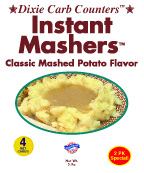One of my favorite artists has always been Hugh Macleod over at http://www.gapingvoid.com.
This week he posted the following drawing. Some simple art with more complex implications all snuggled into a breakfast / morning theme that I just couldn’t shake.
If you are having trouble sticking to your diet, keep in mind that “Habits eat good intentions for breakfast.”
Or put another way, “Willpower will fail.”
You need to stop relying on will power (good intentions) and instead, set up good habits, routines, or systems.
Step 1: Identify the bad habits in your life that are overpowering your good intentions.
Step 2: Replace bad habits with good habits.
Got it? Good.
Now actually do it. Don’t just nod your head and agree.
Write down your daily routine and look at your current daily habits. If you are not currently succeeding you will find that there is almost always a conflict between a habit and your goal.
Start at the beginning of the day to catch some easy wins because the things you do in the beginning of the day can set the tone for the entire day.
Want to hear my recent habit change?
I got into a habit of working out around noon every day. Except it wasn’t really noon, it was, “I will go to the gym after I take the dogs out, have a morning coffee, eat breakfast, and go to work for 4-5 hours.”
The problem is after all that, I often didn’t feel like going to the gym.
Or I’d go to the gym and it would be full of people so I’d complete a terrible workout (or leave halfway through) and come home to complain about how I couldn’t do what I wanted.
So now I had two excuses to not go the gym.
“Blurgh, I’m busy today, no gym for me.” and “The gym is full by now so I won’t have a good workout.”
I realized my routine was setting me up for failure, so instead I switched my morning routine to “I will go the gym after I take the dogs out and have a pre-workout meal.”
This minor change flipped my entire day on its head. My morning workouts were quicker, yet more productive, I enjoyed going to the gym again, and the remainder of my day could be committed to getting work done. The change made me so much more productive that I had to find more to do in my day.
Join in the Discussion
So, what about you? Have you experienced this before? Do you have a current bad habit you are trying to break?
Share your thoughts in the comments – just don’t be surprised if I try to convince you to make a change.
This post is a very, very brief touch on the topic of habits. If you are interested in hearing more let us know in the comments as well.


 to eat foods that might disrupt your gastrointestinal balance.
to eat foods that might disrupt your gastrointestinal balance. options before beginning your diet. There are many different types of low carb products available on the market, but you may not like all of them. If you wait until you begin your low carb diet to buy a food and you hate it, you may be tempted to sway from your new diet plan. By knowing in advance what types of
options before beginning your diet. There are many different types of low carb products available on the market, but you may not like all of them. If you wait until you begin your low carb diet to buy a food and you hate it, you may be tempted to sway from your new diet plan. By knowing in advance what types of  having other low carb versions of bread don’t taste the same to them or are more costly than traditional bread. It can also be a good idea to eliminate bread completely in the beginning, while compensating for the lack of bread with other foods, and later introducing low carb varieties of breads.
having other low carb versions of bread don’t taste the same to them or are more costly than traditional bread. It can also be a good idea to eliminate bread completely in the beginning, while compensating for the lack of bread with other foods, and later introducing low carb varieties of breads.


